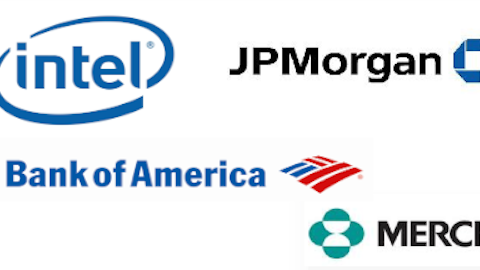The Wall Street Journal is reporting that a federal judge has dismissed a swath of claims filed against banks in relation to last year’s LIBOR rate-setting scandal. But while this action clears out much of the bottom-line-robbing danger to banks, some still remains.
Return of the LIBOR
As a refresher, LIBOR stands for London Interbank Offered Rate. It’s one of finance’s fundamental interest rates and is the starting point for interest rates set in countries around the world, on everything from bonds and home loans to credit cards and derivatives.
Last year, it came to light that this fundamental rate was manipulated during the financial crisis — with banks lowballing their submissions at times, to keep them from being caught up in the deepening panic, while possibly overestimating their submissions at other times, in an alleged attempt to boost profits.
Foolish bottom line
Some banks have already paid fines to U.S. and U.K. regulators over LIBOR rate-manipulation charges. But damages from private suits could potentially have added up to $176 billion, and those are what were — for the most part — dismissed by Judge Naomi Buchwald.
This is big. $176 billion, even spread out among a great number of banks, could have done real damage.

Bank of America Corp (NYSE:BAC) recently settled with Fannie Mae for $10 billion over the sale of bad mortgages, and that left the bank reeling enough. JPMorgan Chase & Co. (NYSE:JPM) spent most of 2012 dealing with the London Whale derivatives trading scandal, which ultimately cost the superbank more than $6 billion.
While JPMorgan Chase & Co. (NYSE:JPM) still showed a profit despite the bottom-line hit, even banks as big as it and B of A — perhaps especially B of A — don’t have the resources to absorb the endless billions that LIBOR-related private suits and their resulting awards might have generated.
And while there are still the regulators and their potential fines to worry about, in one sense, that’s a safer bet for the banks than the wild-west that private litigation can be.
For the same reason regulators can’t go all-out in their attempts to punish the big banks for crisis-related behavior, neither can they go all-out in their attempts to punish the big banks for LIBOR-related behavior: the big banks are still too big to fail, so fines have to be calibrated such that they sting but don’t ultimately imperil banks’ solvency.
As The Wall Street Journal noted, there’s always the chance this decision could be reversed on appeal, but for the moment, at least, bank investors should raise a glass of their favorite English ale and toast the fact their favorite banks may have made it through the worst of their LIBOR-related difficulties.
The article Is the LIBOR Threat Gone for Good? originally appeared on Fool.com and is written by John Grgurich.
Fool contributor John Grgurich owns shares of JPMorgan Chase. Follow John’s dispatches from the bleeding heart of capitalism on Twitter @TMFGrgurich. The Motley Fool owns shares of Bank of America and JPMorgan Chase.
Copyright © 1995 – 2013 The Motley Fool, LLC. All rights reserved. The Motley Fool has a disclosure policy.


